#The Australian Women's Weekly
Photo
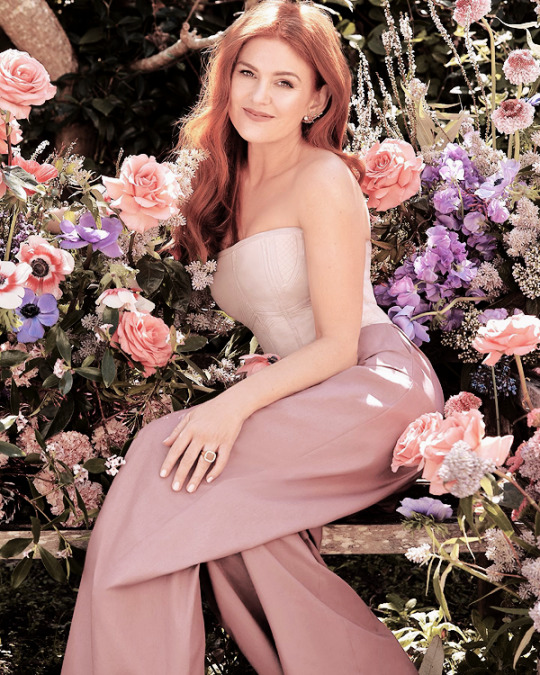

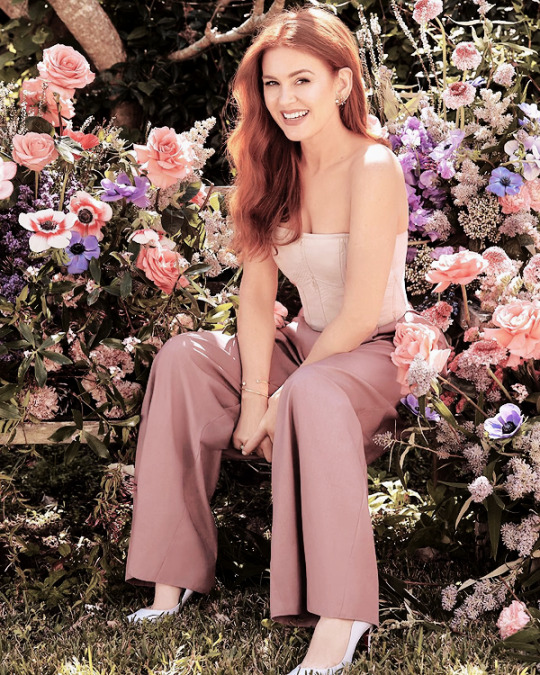
Isla Fisher photographed by Peter Brew-Bevan for The Australian Women’s Weekly December 2022
#isla fisher#peter brew-bevan#the australian women's weekly#women's weekly#ifisheredit#dailygingerheads#glamoroussource#paletmblr#userpastel#soft colors#paleedit#thequeensofbeauty#flawlesscelebs#spring aesthetic#flawlessbeautyqueens#wonderfulwomendaily#dailywomen#ladiesofcinema#by me
481 notes
·
View notes
Text

PRINCESS ANNE The Royal who can’t get enough of Australia
The Australian Women's Weekly
By Juliet Rieden | Published 20 April 2022
The Princess Royal is famously pegged as the British monarchy’s hardest working royal because of the hundreds of engagements she carries out each year, so it came as no surprise that Her Royal Highness was the first member of the House of Windsor to fly out to Australian shores when border restrictions lifted.
True to form, the three-day tour, followed by a hop over to Papua New Guinea to mark the Platinum Jubilee, was carried out at a frenetic pace. But with her husband, Vice Admiral Sir Tim Laurence, by her side, the Queen’s only daughter was in her element reconnecting with a part of the world she tells me she has always loved.
The Princess was ostensibly here for a working visit as patron of the Royal Agricultural Society of the Commonwealth (RASC) for its bicentenary. To mark the occasion the royal couple had been invited to the opening ceremony of the Sydney Royal Easter Show, spending the whole day at the showgrounds.
Palace aides then tailored a bespoke program of engagements to touch on other key areas of interest for the Princess, especially talking to members of frontline services for fire and floods. “My husband’s brother lives at Lismore. Fortunately, up the hill. We’ve been kept in touch with the flooding,” she explains in my exclusive interview in England in advance of the tour. “I have to say it’s one of the things about the Sydney Show which I think brings together so much of the impact of what’s been happening, the extreme of the fires you’ve suffered and the floods. Sir Tim and I are working farmers so very much appreciate the opportunity to visit the Sydney Show.”
Princess Anne first visited back in 1970 and today she and Sir Tim arrived at the opening ceremony in the same historic horse-drawn calèche that 52 years earlier she had climbed into with her parents, the Queen and the Duke of Edinburgh, and elder brother Prince Charles. That trip was the young Princess’s first major overseas tour and also the first time the now ubiquitous ‘walkabout’ had been tested in Australia.
This was the groundbreaking new way the royal family connected with the public, no longer standing on ceremony, but heading out into the crowds to meet people face-to-face. While it is now considered a cornerstone of royal tours, for the shy 19-year-old such encounters proved intimidating. “To be faced with a wall of strange faces, which may look very friendly at the time, but where do you start the conversation? That is quite a daunting prospect,” she confesses, smiling at the memory.
“We started the trip further south, so the introduction to the walkabout was in Melbourne. Sydney was a lot more buzzy, and of course, in a way the Easter Show is exactly the right place to go when you first go to Australia because there is everything that is Australian there and people from all over the country. It is a huge introduction to Australia; a really good place to start.”
Despite the anxiety of fronting up to crowds – which were huge – the Princess’s passion for the Show was ignited that day. “I was really delighted when my father asked me to succeed him as Patron of the RASC,” she said on this visit and her fervour was clear to see.

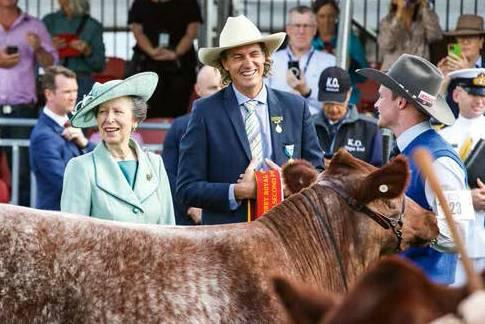

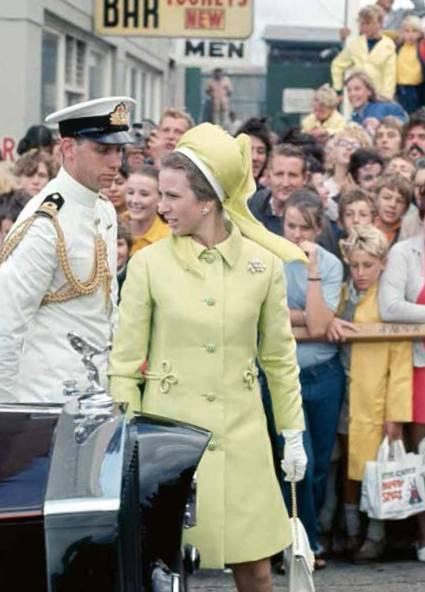
The Princess insisted on staying on foot in the showgrounds rather than being chauffeured in a buggy, so she could chat to as many people as possible. As she strode through the crowds she was greeted by excited faces and gasps of delight. And when she was called on to hand out ribbons for prize-winning calves and rosettes to youngsters involved in Riding for the Disabled, of which she is also the patron, she eagerly shared her knowledge of farming and rural life.
Watching from the sidelines, it was obvious that the royal has an army of fans in Australia. Indeed, as soon as her attendance was announced some weeks before the visit, ticket sales soared. Usually it is the following Easter weekend that is most popular, but the star power of the Princess Royal pushed April 9 to the top of the show’s sales’ charts, with 55,000 through the gates that day.
As a member of the royal family, crowds are an occupational hazard, but I wonder if the Princess still found them as confronting today. “It’s always interesting – because you just find people with stories to tell. So yes, I’m less daunted but maybe approach it slightly differently. Of course, weirdly, technology rather gets in the way now because whereas in those days [there was] the odd camera – now if you’re not careful it’s a wall of phones and you can’t actually see anybody,” she laughs.
Back in 1970 Princess Anne watched and learned from her parents, a necessary process of osmosis that formed her initiation into a life of service. “We’d been away for a while by then so we were getting into the swing of it. I think there is no way they [the Queen and the Duke] could have prepared you for just how tiring it gets. Suddenly you find that you’ve woken up in the middle of the night having a nightmare that you’re standing in the middle of a reception and you can’t speak. That creeps up on you and I think you just learn to pace yourself. I can now sleep in any form of transport, which does help!”
Choosing the right wardrobe was another learning curve. On that first trip the Princess’s hat was caught in a gust of wind and reporters famously heard her utter “bloody wind”, a comment which fuelled the tabloids. “Milliners do things which make perfect sense when you’re standing still inside; it makes slightly less sense when you’re outside in a draught, especially when it’s blowing from behind you, but that’s experience, as they say. These things you learn how to deal with.”
Another sartorial lesson adopted from her mother was putting weights in skirt hems. “For some materials that was an absolute necessity. It’s fine if you want to wear light clothes but airports, always breezy, never a good idea, so you find some way of dealing with that. It’s a very old-fashioned habit. You wouldn’t find it much now unless you actually asked or had things specifically made.”
Prince Charles had been to school in Australia at Geelong’s Timbertop and was already a fan of our outdoor lifestyle, ocean swimming and surfing. “We did go to his school in Geelong and I had a chance to meet some of his friends,” the Princess recalls. “I rather envied him that opportunity, I have to say. I could have done with seeing a bit more [of Australia].”
Nevertheless, on that first trip the Princess did manage to fit in her own private time out. “I was race riding at the time and I actually went out and rode for three days. From my perspective it was trying to keep fit because I was coming back to riding at home so I didn’t really want to spend a week sitting on my backside doing nothing. I rode a horse that had been in the Australian [1968 Mexico Olympics] team in Centennial Park in Sydney. That was, in retrospect, one of the bravest things I’ve ever done but he was a lovely horse,” she tells me.
Why brave? “Because I jumped some of the fences there,” she beams.
Princess Anne is adamant that agricultural shows like the Easter Show still have relevance. “The great thing about the Sydney show is since it first began it’s been bringing people [together] learning about Australia and how to be more successful in farming to build on its strengths in that time,” she explains. “The emphasis will have shifted [and] we certainly found in this country that agricultural shows have made a bit of a comeback because they’ve recognised that it is not so much about the farming community that needs to be stuck together, it’s introducing and making sure people understand farming who no longer have that automatic connection.

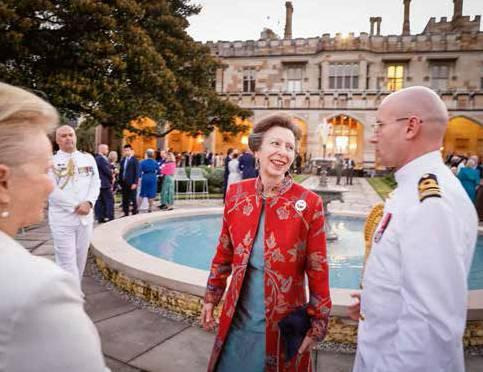
“Two hundred years ago everybody would have understood perfectly what the shows are trying to do, but that would have been a market, somewhere where you could promote how good you were in front of other farmers. Now, it’s more a question of educating populations as to the issues and challenges that farming faces.”
On the second day of the tour the Princess was eager to meet with Rural Fire Service volunteers and pay her respects to the families of two firefighters who had tragically lost their lives in the 2019 bushfires. It was emotional for Errol O’Dwyer who held his son Andrew’s framed photo as he talked to the Princess. Standing next to him was Andrew’s little girl, Charlotte, who was just 19 months old when her father died aged 35. In her speech the Princess highlighted the impact of loss on a community and the risks volunteers take on. She had no notes and spoke from the heart.
Afterwards she visited the Sea Heritage Foundation’s MV Cape Don, a lighthouse tender vessel under restoration, where her brother’s charity, Prince’s Trust Australia, is partnering with an initiative to train First Nations’ youth in the maritime industry. The Princess and former naval officer Sir Tim were fascinated by the ship and the project. “I think there’s the scope for making use of the history to inspire the next generations, because we’re all short of maritime workers,” she comments.
In a few weeks the Princess Royal will be joining the celebrations for Her Majesty’s Platinum Jubilee and inevitably our conversation turns to her mother’s legacy. “It’s a very difficult thing to put your finger on. I doubt if there’s a single description that would fit the bill,” she muses. “There is an element of constancy here in terms of attitude to service and recognition of service, the values that individuals bring ... I think she’s been able to support that and bring those people to the fore in a way that is so important.
“[Likewise] The Queen and I had a discussion the other day about the difference between fashion and style and I think maybe that’s relevant in the sense that she didn’t do fashion but she certainly does style, and style tends to last longer. You have an individual style and it’s a quality which has a long-term value.”
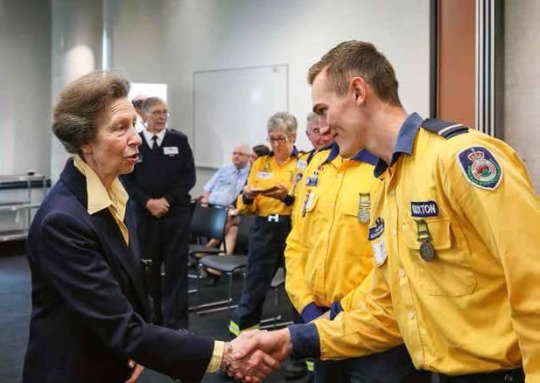


And while the longevity of Her Majesty’s reign is historic, her sheer volume of knowledge is also quite mind-blowing. “Yes, when you tot up the number of leaders of countries and her own prime ministers, that’s a quite extraordinary perspective.
“Her memories and understanding of each of those was they reach that point and the impact they can make – but equally having the ability to recognise that every individual could do it slightly differently. That may be part of the value. We’re not all the same.”
The Princess’s father was her mother’s “strength and stay” and now he’s gone, his contribution is fully recognised. “Unwavering support is probably the best way of describing it,” his daughter notes. “I think he also understood the things he was better staying out of – although it was quite difficult in the early days – but there were also distinct areas where he could help and did. His input and perspective and the fact that his travels took him to a slightly different area of the country and internationally could have a real impact. I think he learned how to distinguish when those moments were.” The Princess concedes that her father would have had a tough initiation. “I’m sure it wasn’t very easy to begin with because there was no such thing as a role then. He had to invent that one.”
When I ask what lessons she has learned from her mother, Princess Anne returns to the idea of style. “Maybe it is that style in the long term and the way you do things, remaining constant. I think it’s the way you treat people, with respect for individuals. When you’ve been around for long enough and people keep changing at the top of your organisations, if you’ve had a good relationship, a bit like prime ministers, you need to accept the next one because that isn’t necessarily the only way of doing anything. There are moments when you think, ‘are you sure that’s what you ought to be doing?’, but you have to stand back and let them get on.”
When the Queen was crowned, her daughter was second in line to the throne; today she’s 17th behind her younger brothers. It’s a gender penalty that is no longer applied and many feel it should be fixed retrospectively to reflect The Princess Royal’s unfailing sense of duty and service that, at 71, is as strong as ever.
But Princess Anne says she feels her gender has never been an obstacle. “I have been treated as an honorary man for a lot of my life. I did take part in a sport which didn’t have any gender balance. It was open to both, end of story. So, I had the benefit of being treated equally … although oddly enough when I first went to Australia I found a difference, the men went down one end of the room and the women went up the other. I didn’t think that was entirely appropriate.”
Now, Princess Anne thinks Australia has moved on and it’s a place she never tires of visiting. “I think Australia remains as one of the most attractive places to go to, for whatever reason – work or leisure.”
#princess anne#princess royal#The Australian Women's Weekly#article#interview#queen elizabeth ii#prince philip#duke of edinburgh#tim laurence
64 notes
·
View notes
Text

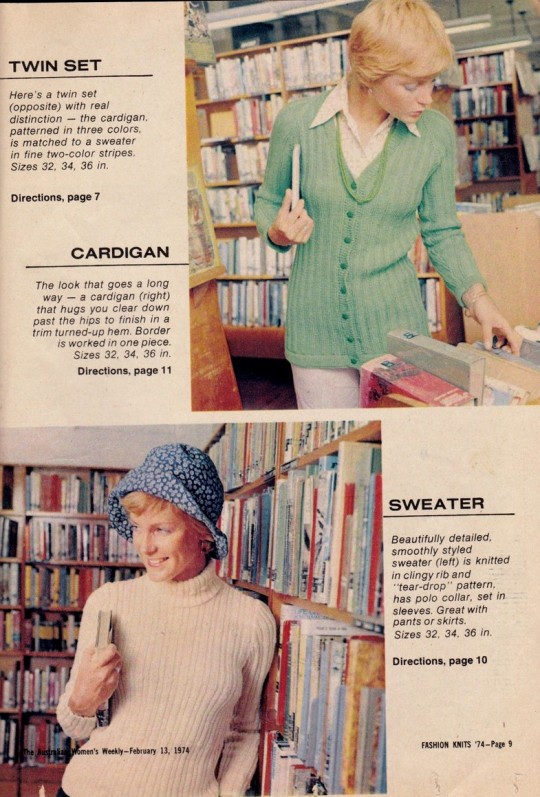
knitwear featured in The Australian Women's Weekly - February 1974
#the australian women's weekly magazine#australia#australian#1974#knitwear#70s fashion#australian women's weekly#retro magazines#the australian women's weekly#hats
9 notes
·
View notes
Text

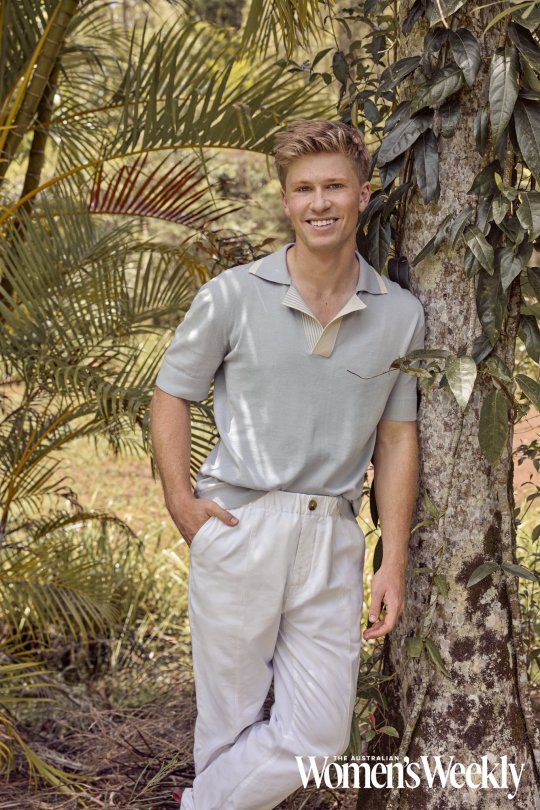
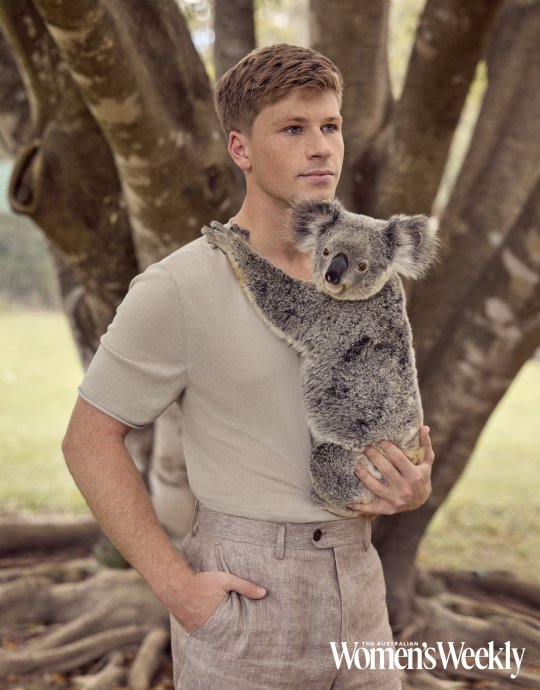
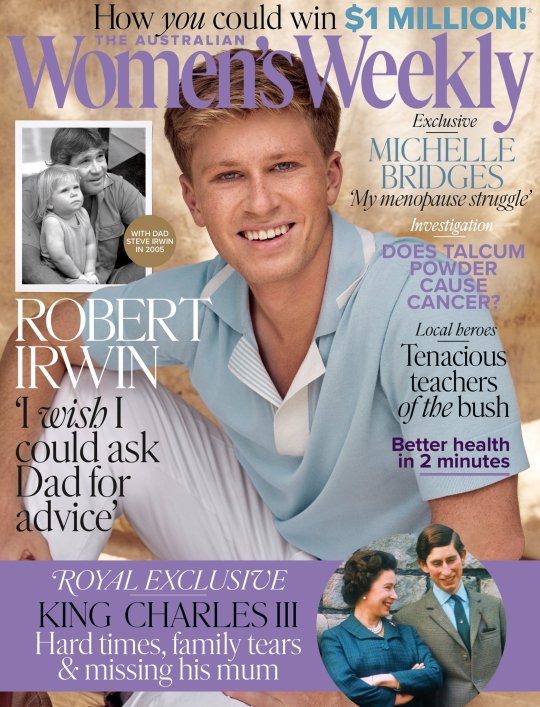
Robert Irwin in The Australian Women's Weekly, 2024.
6 notes
·
View notes
Text
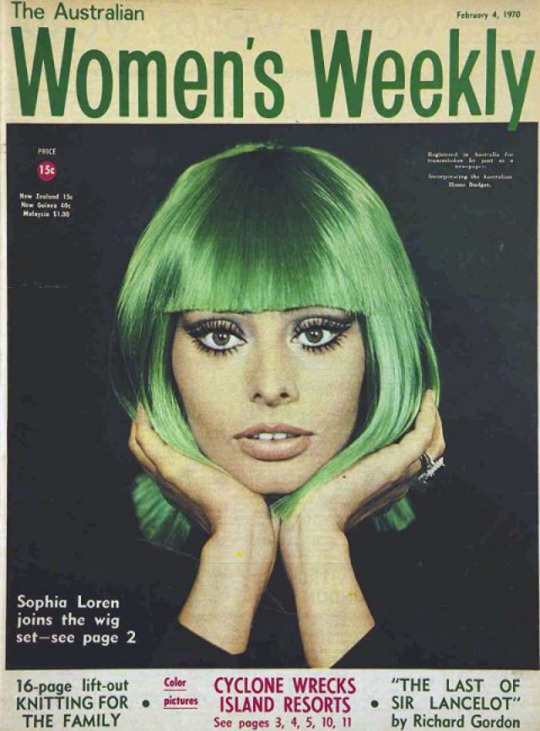
#the australian women's weekly#1970#sophia loren#wigs#wig#green hair#italian actress#Alexandre of Paris#alexandre of paris wigs#Tazio Secchiaroli photography#Tazio Secchiaroli
0 notes
Text


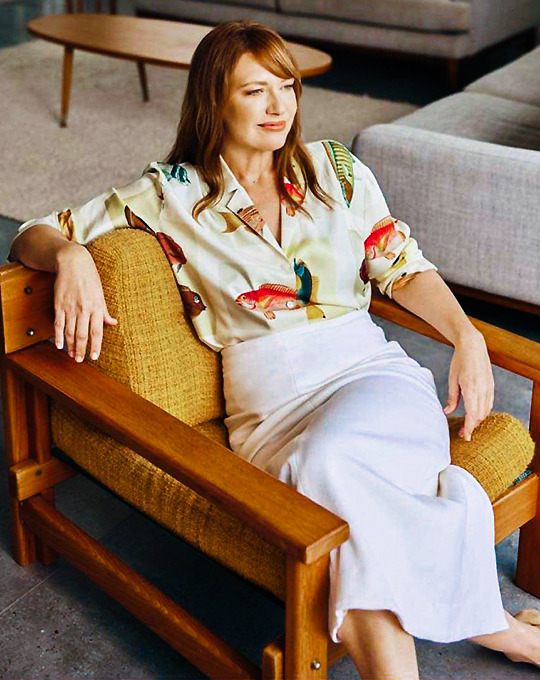
Anna Torv - Australian Women’s Weekly
#Anna Torv#interview#Anna Torv - Australian Women’s Weekly#AnnaTorv#Olivia Dunham#Fringe cast#she is so beautiful#my edit
104 notes
·
View notes
Text
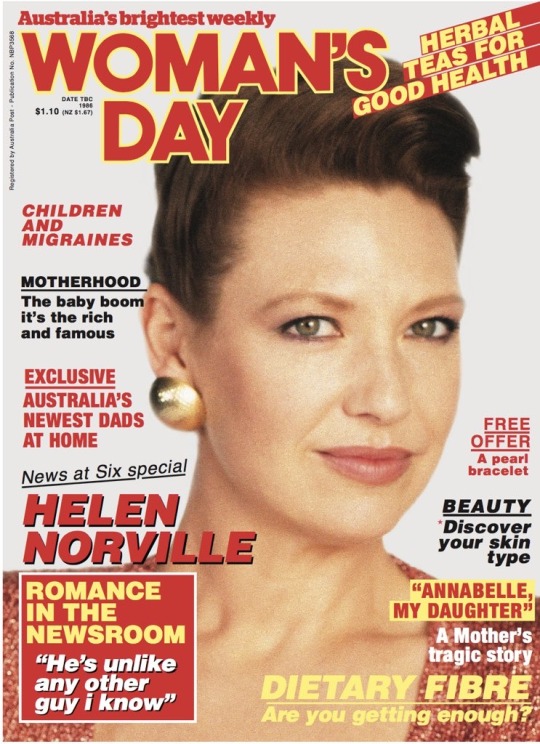

L: Helen Norville on a fictitious cover of the Australian Woman’s Day - April 1986
R: Anna Torv in a real issue of the Australian Women’s Weekly - September 2023
The parallels did not escape this The Newsreader fangirl! 😉
Did you know that the AWW turned 90 years old this year? Its very first issue was released as a black and white paper in June 1933, costing a reader 2 pence, boasting headlines such as “Equal Social Rights for SEXES” and “What Smart Sydney Women Are Wearing”. It changed from being a weekly magazine to a monthly in January 1983, but maintained its name as The Weekly.

Ironically, the Woman’s Day (starting in August 1948) is published as a weekly format! So the names of each magazine don’t really reflect the truth of their publication frequency 😉
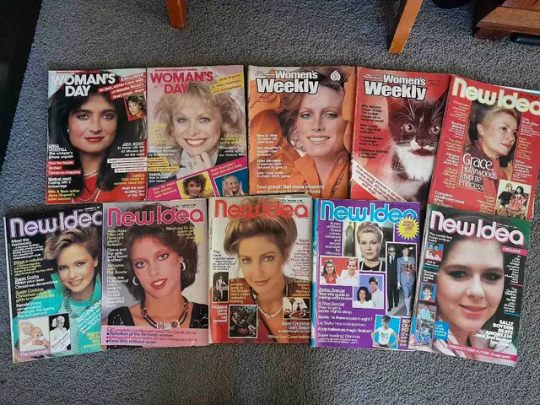
I am a collector of Australian women’s magazines from the 1920s to the 1990s, and have many historical issues of each magazine. This picture is only a handful of these. I must say that even from a historical sense, the quality and calibre of the Women’s Weekly is much higher than the Woman’s Day. But both do a fabulous job at depicting what womanhood and motherhood was like in whatever era that the particular issue is from. They both provide some very interesting pondering points and progressive articles, whilst also giving parenting and housework tips, recipes, ads and sewing patterns on the pages in between. They’re very cool to flick through!
#helen norville#anna torv#the newsreader#australian women’s weekly#australian woman’s day#australian women’s magazine neediness you didn’t ask for but got anyway! 😉
24 notes
·
View notes
Text

Shut the fuck up that's not The Duck Cake from Bluey, that's The Duck Cake From The Women's Weekly Children's Birthday Cake Book.
You will never be her. Have some fucking respect
#itsallmine#no other tags bc i just gotta complain#yeah i know bluey is massive but like. shit I grew up with is just now a haha lol fun challenge#legit i watched a few seconds of the video and there is No Fucking mention of the Women's Weekly cookbook#and every australian in the comments was yelling bc he wasn't following the WW recipe?#like jfc. isnt this channel for creating 'fictional' food??? ITS NOT FUCKING FICTIONAL????#like generations of aussie kids know and love the duck cake bc of how wild the inclusion of chips on a cake#like please? where is your fucking research?#do not slander the womans weekly childrens birthday cake book#its a sacred tradition#also fun fact my mum has a copy of the first edition book bc she bought it when it first came out#turning off reblogs bc im sorry i cant deal with yanks getting pissy with me bc I'm upset that Australian culture is#idk would commodified be the right word?#i think i know how the irish feel around st patricks day now rip
7 notes
·
View notes
Text
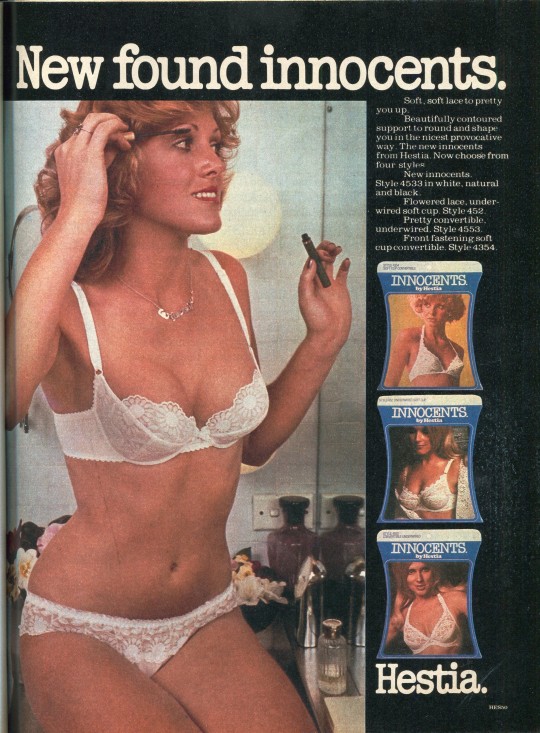
Hestia Innocents Bras | 1976 | Australia
#1970s#1976#70s#vintage#magazine#advertisement#ad#lingerie#bra#hestia#australia#australian women's weekly#photo
11 notes
·
View notes
Photo
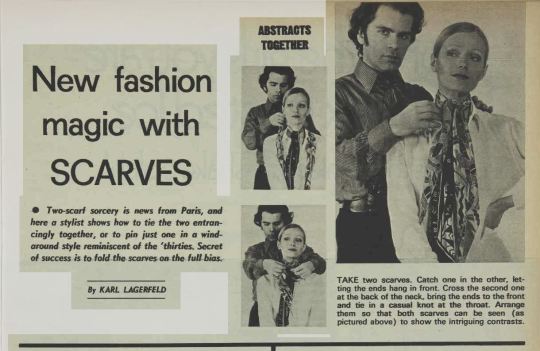
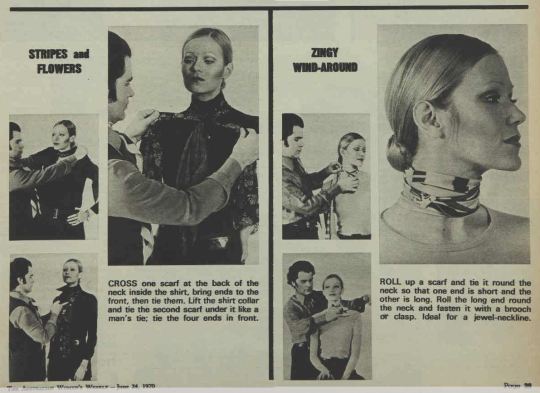
“New Fashion Magic With Scarves” by Karl Lagerfeld, 1970
#karl lagerfeld#vintage fashion#fashion#scarves#1970s fashion#1970#retro#seventies#chloe#vintage magazine#australian women's weekly#*
38 notes
·
View notes
Photo
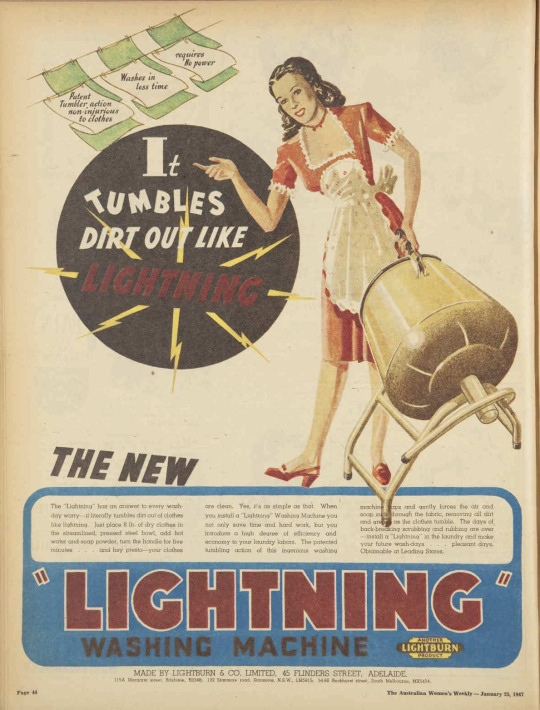
Lightburn Washing Machine (1947)
#lightburn#lightning#washing machine#hand powered#magazine#australia#australian#women's weekly#1940s#40s#1947#retro#vintage#ad#advertising#advertisement#throwback#flashback#nostalgia
3 notes
·
View notes
Photo

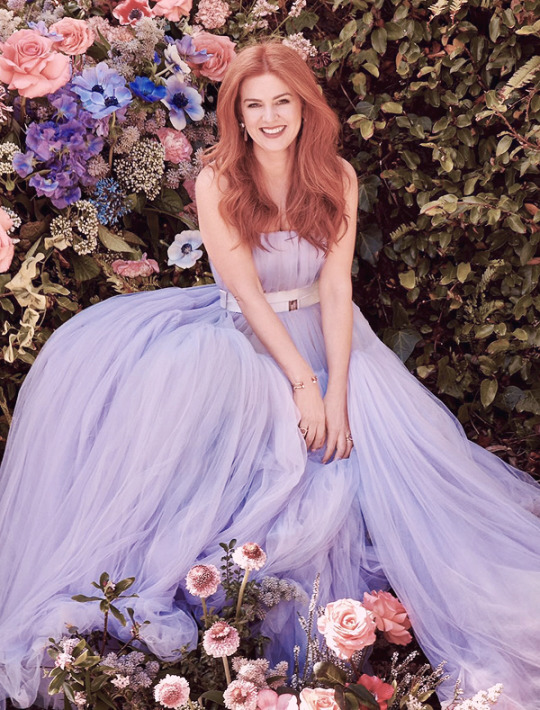

Isla Fisher photographed by Peter Brew-Bevan for The Australian Women’s Weekly December 2022
#isla fisher#peter brew-bevan#the australian women's weekly#women's weekly#ifisheredit#thequeensofbeauty#dailygingerheads#glamoroussource#paletmblr#paleedit#userpastel#soft colors#spring aesthetic#dailywomen#wonderfulwomendaily#flawlessbeautyqueens#femaledaily#by me
402 notes
·
View notes
Text
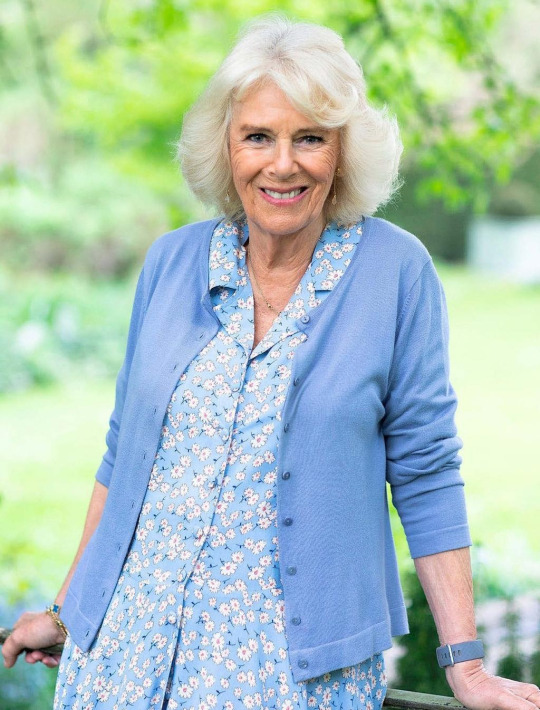
Camilla The down to earth Duchess
Words by Juliet Rieden, Photography by The Duchess of Cambridge | Published 13 July 2022
It’s early afternoon on the first day of Platinum Jubilee celebrations in London and the Duchess of Cornwall has had a frenetic, thrilling and at times unexpected morning. Just a few hours ago she was seated with her stepdaughter-in-law Catherine and the rambunctious Cambridge trio – Prince George, Princess Charlotte and Prince Louis – in a magnificent horse-drawn barouche, the royal children barely able to contain their excitement as they waved furiously at the tens of thousands lining the route from Buckingham Palace down The Mall. On horseback behind them were the husbands of these two future queen consorts, the Prince of Wales and the Duke of Cambridge, resplendent in full military regalia.
In the week leading up to the event, the two duchesses had also been together, this time at Camilla’s private home, Ray Mill House in the rural county of Wiltshire, where Catherine turned photographer for our very special garden shoot. The Duchess of Cambridge’s prowess behind the lens is well documented in her many photos of her children, but this is the first time she’s taken an official portrait of her stepmother-in-law. In her royal life the Duchess of Cornwall has had to get used to being constantly photographed, but it’s not a comfortable place, so having Catherine take these birthday celebration photos is very welcome.
The bond between the two wives of Windsor is evident and the shots capture the Duchess off-duty and relaxed in one of her favourite places: her garden.
Back to today, and after the pageantry and crowds of the parade, all is calm in Clarence House’s elegant Morning Room, where the Duchess and I sit down for a wide-ranging and surprisingly personal interview. “I’m still in Trooping dress,” she apologises, looking down at her outfit, its striped pastel shades blending in with the soft blue of the famous room which was the Queen Mother’s favourite when she lived at Clarence House and which today is bathed in sunlight. “It’s lots of ribbons sewn together. Very clever. I can’t sew anything,” she chuckles. “I did mean to change into something more casual, but I thought I would keep everybody waiting.”
I first met the Duchess at Clarence House a decade ago. She was preparing for her inaugural visit to Australia with Prince Charles, and in advance of the tour I was invited to spend a week shadowing her. Since then I have continued to follow the Duchess as her royal work has burgeoned along with her profile, but this is the first time she has agreed to a private interview.
Casting her mind back to that first taste of Australia, Camilla smiles. “I think he [the Prince of Wales] always wanted to take me there and show me what it was like. He was proved absolutely right. I love Australia,” she declares.
Prince Charles’ unique connection with this country began when he was 17 and went to school at Geelong Grammar, his first major visit overseas and a chance to escape the royal bubble at a very formative time for the young heir apparent. “He’s always spoken about it, his time at Timbertop, which he said was pretty hard but he loved it. Probably after Gordonstoun [the Prince’s school in Scotland known for its “character building” regime and where he was bullied by some of the boys], it was light relief to go to Timbertop. He said everybody was very kind and easygoing and I think it toughened him up.”
The Duchess says that, like her husband, she appreciated what she affectionately calls the “take it or leave it” spirit of Australians. “I like that everybody’s down to earth and they say what they think. I’d much rather people were out there saying what they think than beating round the bush, telling you a lot of porkies. And I like the Australian humour. You have a jolly good laugh with them. I just think it’s a lovely country. This year we were ready to go back again, but we just couldn’t fit it into the Jubilee schedules. But we’ll be back soon, I hope.”

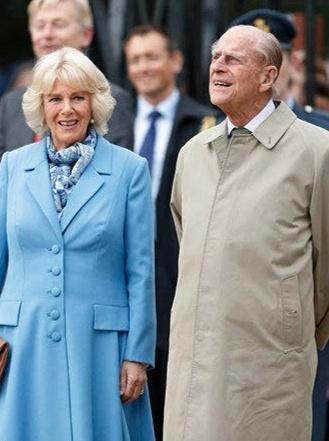

In the meantime, the couple closely follows what is going on in Australia, and during the Black Summer bushfires in 2019, GIVIT charity CEO Juliette Wright OAM was blindsided when out of the blue she received a message from the Duchess’ team. “I was giddy with excitement,” confesses Juliette. “The Duchess was devastated by what she was witnessing on the television, her heart was going out to people affected by the bushfires, and she said she would like to give a personal donation to support an animal charity and also a charity that’s helping people on the road to recovery.”
In the interests of raising awareness, the Duchess allowed GIVIT to mention her support on social media. The response was immediate – a 46 per cent increase in traffic to the website. “I’ve never seen such a spike in donations. It was like she created a cyclone of giving just by her act of generosity, so more donations were flowing to those in urgent need,” says Juliette who, seizing the day, asked if the Duchess would become their patron. “They came back a day later and said she would be honoured.”

Queen Consort
The Duchess celebrates her 75th birthday on July 17 – a milestone not least because, at a time when most of her peers are kicking back and smelling the roses, she is preparing for the biggest job of her life. When the Queen used her February Platinum Jubilee message to express her “sincere wish” for Camilla to be known as Queen Consort “when my son Charles becomes king”, she rubberstamped the monarchy’s future and her daughter-in-law’s title. Public opinion, which had vacillated on the topic, noticeably shifted. While Camilla has never sought the limelight, her quiet and dedicated service was there for all to see. She would be our next Queen.
“Obviously it’s a great honour and I was deeply touched for Her Majesty to have given me this role,” says Camilla, who as Consort will be following in the footsteps of the late Duke of Edinburgh. It was the Duke, she says, to whom she often turned for counsel while learning the royal ropes. “The Duke of Edinburgh was always a very good ear. He was a role model to me and a very good person to take advice from because he always told me what he thought, which was very helpful, especially with things about the army because I took over the Rifles [regiment] from him.

“He was always two steps behind the Queen, which for a man must be much more difficult than for a woman – and somebody as macho as he was, who’d commanded ships. So I think [from the Duke] I learned that your place is several feet behind the monarch. You’re there as a back-up.”
It’s a role she could never have imagined when growing up in rural England playing with her ponies. But I suspect it’s that practical, carefree country childhood which gave Camilla the stable basis to cope with the roller-coaster of royal life in the spotlight.
“I was one of the very lucky ones. I had the idyllic childhood right in the country, sitting on the South Downs with my brother and my sister and our pets and our ponies. I think it was a very simple childhood,” she says, casting her mind back. “Sometimes in the summer we used to ride to school on our ponies, probably something that’s more Australian than English, but we used to ride and then tie them up and ride back again. It just shows how things have changed, because in those days there was nothing on the roads. Can you imagine now letting a child ride to school with its satchel on its back? I mean it wouldn’t happen,” she laughs.
Young Camilla Shand was nine years old and in heaven. “It didn’t happen very often, but when it did it was lovely. We just pottered along this very pretty road with two or three cars going past. Life was very laid-back. The awful thing is, I suppose I thought life was always going to be like that … It certainly gave us all a very good grounding, because we could start off with a smile on our face. As far as I remember it was perfect.”
Camilla was the eldest of three and she, Annabel and Mark were a tight-knit unit. “I never took the lead very much, we just did things together. My brother had a very bad temper and was quite spoiled sometimes, but it was very evenly shared out.”
Life lessons
Their mother was the glamorous and well-connected Rosalind Shand (née Cubitt), who hailed from a wealthy aristocratic family and was ‘Debutante of the Year’ in 1939. Camilla was very close to her and says the greatest lesson she taught her children was the art of small talk, something that certainly prepared her for royal life.
“My mother was absolutely brilliant at making us speak to people,” the Duchess recalls. “She used to have people to dinner; it didn’t matter who it was, old or young, some of them we thought were incredibly boring, but she used to sit at the end of the table and say: ‘Talk! I don’t care whether you’re talking about your pony or your homework, just talk!’ She was also quite forthright and never minced her words.”
Putting people at ease in formal situations is now part of her daily work and something the naturally gregarious Duchess enjoys, but she notes that taking the lectern for speeches – which she is called to do with increasing regularity – is torture. “I get petrified making speeches,” she says. “I hate every moment of it. People always say it’ll get better and sometimes I find it’s all right if I really know my subject, but sometimes [I get] that awful thing beforehand of really shaking and feeling seriously sick.

“The first speech I ever made was about osteoporosis in Lisbon, before I was married, and the night before I was out of bed tying my sheets together to see if I could escape and go home. I’m never going to enjoy it.
“My husband is very good; he loves it. Because he’s a very good actor, I think. You’ve got to have a bit of acting experience. I was the worst actor in the whole school. If I was given one line to say, it always came out backwards. So I think speeches – no, they’re never going to be my favourite things.”
Camilla’s father, Major Bruce Shand, was a dashing officer in the British Army who was captured by the Nazis in World War II. He married in 1946 and left the army in 1947, but growing up Camilla knew very little about his war years. Then decades later he started to open up to his grandchildren.

“We couldn’t get him to talk about it. Yet when my children [son Tom and daughter Laura] and my sister’s children came along, especially the boys, he started to,” she says. “He was captured at El Alamein and was very lucky, really, because he was shot. He was in an armoured car, about 100 yards from Rommel’s encampment, when my father opened his mouth to shout a command at his wireless operator and the bullet came zinging from the German, went through one side of his cheek, out the other and killed his wireless operator. It was extraordinary because it missed all his vital organs, his tongue, his teeth, but obviously his face was blown to pieces. Then a second bullet got him through the leg.”
Major Shand was held captive. “He remembered Rommel in his greatcoat walking off and climbing aboard a tiny aeroplane. That was probably the last time he was seen!” As an injured prisoner of war, Camilla’s father was taken to a hospital in Greece, where “there was the most brilliant plastic surgeon. Nobody had ever sewn up anybody from the inside [of their mouth] before. You would have never known my father had anything wrong. Afterwards he was shipped back from Greece to Spangenberg Castle in Germany, where he was a prisoner for two and a half years.”
The Major, who died in 2006, a year after Camilla married Prince Charles, would undoubtedly have loved to have seen his daughter playing such a key role in the Trooping the Colour parade. “He’d be so pleased knowing that I was Colonel-in-Chief of the Rifles now. I don’t think anything would have made him more proud,” she adds wistfully.
Losing Rosalind
Camilla’s mother didn’t live long enough to see her daughter marry into the monarchy. She died “far too young” in 1994 at the age of 72 following a long battle with osteoporosis.
“She was in her mid-60s when she got it,” says the Duchess. “Nobody in those days knew anything about osteoporosis. So when she suddenly used to scream, which she did if somebody touched her, we thought, ‘Why is she making such a fuss about this? It can’t be that painful.’ She was a strong woman, capable of anything, but she shrank and she shrank and she started bending over like a croquet hoop. It affects your stomach and lungs, so her breathing became very bad. She couldn’t eat much food and was in agony the whole time.
“We were at such a loss to know how to help. She used to go to the doctor who would say, ‘There, there, you’re old and frail, all old people get the dowager’s hump, that’s what happens!’. She gave up in the end. She was a wonderful gardener, but she couldn’t garden, she couldn’t do anything at all.”
The pain of losing her mother to this cruel but preventable disease is with Camilla every day. “It was terrible, because we felt so helpless,” she adds.
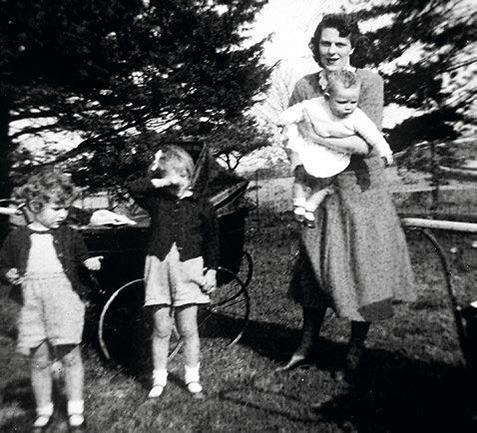
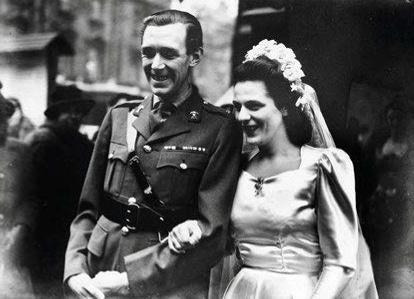
That experience inspired her 21 years ago to become President of the Royal Osteoporosis Society (ROS). Increasing bone strength is crucial, she says, to preventing the onset of osteoporosis, and one of the latest initiatives she can’t get enough of is the Silver Swans, a dance class for over-55s launched by the UK’s Royal Academy of Dance, whose president is ballerina Darcey Bussell, and Camilla is now the Academy’s Vice Patron.
The Duchess tells me she will never forget the first time she saw some “Swans” in action. “They were taking me around [the Academy] and said, ‘We’ve got a Silver Swans class.’ I said, ‘What’s that?’ ‘It’s ballet for people getting on.’ I said, ‘You must be joking’ and thought to myself, ‘Oh dear, we’re going to have to sit through a lot of very old people crashing about all over the place. I don’t know how I’m going to keep a straight face.’ I went in with my teeth gritted, biting my lip, mustn’t laugh – but some of these people, I couldn’t believe my eyes.”
Camilla was so impressed she decided to join. “I said to the dance teacher, ‘Would you ever take a private class? I’ve got a few friends who’d be very interested.’ So she comes here when I’m in London and we crash about very happily and it’s great fun.
It’s jolly hard work – you get really involved and I find it’s a really good way to exercise.”
The Duchess’ support of the program has had a huge impact, Darcey tells me. “She’s very happy to talk about her own experience. She’s very funny, too. When we had the opening of the new headquarters of the Royal Academy of Dance recently, she came into a class of Silver Swans. There were men there as well, some in their 80s, and she was like, ‘Oh gosh, they’re much better than me’, and I suddenly saw her competitive spirit coming through.”
I ask the Duchess if she has managed to recruit her husband yet. She shakes her head, laughing. “He’s a very good dancer and loves ballet, but I’m not sure how good he’d be on his tippy-toes.”
As a young girl the Duchess had lots of dance lessons but never ballet. “At school we had once-a-week dancing, rather like Strictly [Strictly Come Dancing, Britain’s version of reality TV show Dancing with the Stars]. We learned the waltz and the quickstep, the cha-cha-cha and the Charleston, but I was always the boy so I always pushed people around the floor. Even now I find it quite difficult going the other way.”
Strictly is one of the Duchess’ favourite TV shows and also – apparently – a hit with Her Majesty. “I love seeing people who can’t dance at all. They arrive with no sense of rhythm, and then you see them progress and they end up as professional dancers.”
The Duchess has now developed a friendly bond with Aussie dancer and Strictly judge Craig Revel Horwood. The unlikely couple met in 2008 working on a “Boogie for your bones” campaign for the ROS. Camilla came to an event and they ended up on the dance floor together.
“I thought she was going to be terribly posh and aloof,” says Craig. “But actually she was so down to earth, so full of beans, such a great dancer and totally up for all of it. I never thought for one moment we would ever get into holds and start doing a cha-cha-cha in front of everybody, but we did! My family was sitting around the six o’clock news at home in Ballarat, Victoria and then suddenly I came on dancing with the future Queen of England!”
Over the years Craig has been a regular at royal functions and says the Duchess and Prince Charles are a fantastic couple. “They have a laugh, and they care about people,” he shares. “I think it’s taken people time to get used to the fact that they are together, but their relationship has really shone and that’s what people pick up on.”
Darcey Bussell agrees with that. “Obviously there were tough times with Diana and that whole transition, but marrying Charles and realising what a bond they have and a force of positive strength [they are] together, I think that has really resonated with the public.”
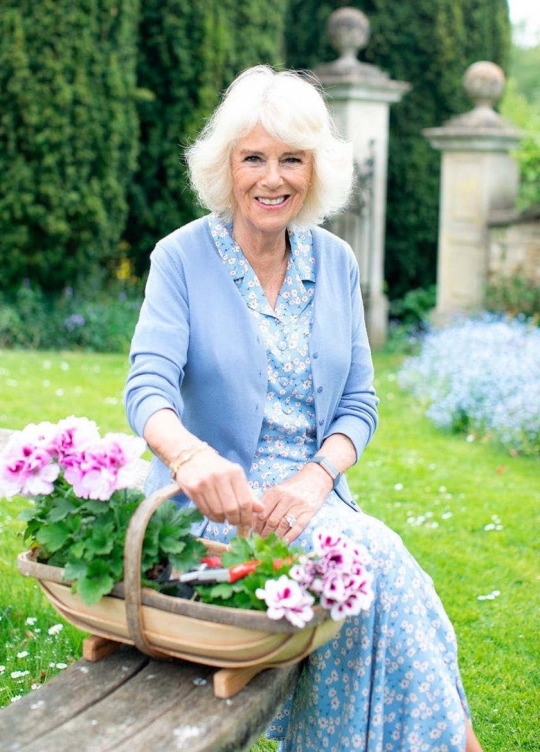
Finding her voice
In her royal work Camilla talks to strangers from every walk of life, and while she is naturally a shy person, her ability to connect with those she meets, no matter their background or circumstances, has become her secret weapon. It’s something Jude Kelly, CEO of the Women of the World Foundation, has watched unfold. “The Duchess has a clear sense that she has a powerful voice and she wants to use it for people who don’t have a powerful voice. She’s chosen to use it for women who are dealing with horrendous levels of violence.”

This work has become a significant focus for Camilla, who will never forget the moment that sparked her involvement. “It was when I first went to a meeting of SafeLives – in 2016 – of which I’m now patron. It was unbelievable. We all sat around in a circle and six women told their stories. I remember sitting opposite this woman who was about my age and she wasn’t talking, but her daughter’s friend got up to talk and I watched this woman’s face, which was tragic, and I knew something awful was going to come out. Her friend told the story of Jo, who was married to a British Airways pilot, very wealthy, they lived in the middle of Ascot, two children, and he’d been abusing her. Eventually the police came in, he had a restraining order and he wasn’t supposed to visit her.

“For some reason he was allowed to see the two children, so he took them out for the day and instead of dropping them where he was supposed to, he brought the children back into the house, took out a cleft hammer and beat his wife to death. Fourteen blows on the head, with the children in the next room.
“We all sat there in complete and utter silence. Nobody could breathe, desperately fighting back tears. It shocked me so much. I watched this woman, who was my generation, aged 70, and was going to have to bring up her grandchildren because her daughter was dead and that father was in prison.”
The Duchess knew she had to act, and while the SafeLives charity is a long way from usual royal patronages, issues of domestic violence, rape and coercive control have become a calling. “I think they were very surprised. But it’s just something that gripped me. I couldn’t just let it go. At least I can try to do something that might help others by standing and shouting about it.”
Away from her public life, Camilla’s favourite role is grandmother. “I’ve just said goodbye to several [of the grandchildren] who’ve been staying here for Trooping. That’s the best role there is,” she says, beaming. “The girls are becoming teenagers, which is a bit of a worry. I’d quite like to put a lid on their heads and make them small again because they’re all sweet and scrubbed and nice. Now they’re quite keen to have a good argument!
“They’re just fun to be with. I love being with them, eating together, going to see a film or a play. They’re great enthusiasts. And it’s always nice to be in touch with that generation because it keeps you abreast of young people’s feelings and ideas. It also makes me think how much has changed between their childhood and my childhood. Things are so different. The idea of us having these phones full of games and everything else they can do with them, and then they seem to get on aeroplanes and go here, there and everywhere. We hardly knew what an aeroplane was. I think it’s a much more difficult world that they’re growing up in than the world I grew up in.”
If Camilla has wisdom to impart it would be, “Be yourselves. Just do what you think is right, but if you’re worried in any way about it, take advice from somebody older and wiser because I think young people can help old people. That’s why we get on so well. We’re different ends of the spectrum. They can learn a lot from us, but we also can learn a hell of a lot from them. I remember I always went to my grandmother to get advice, so I rather hope they might come to me.”
And finally to 75, a number Camilla is not celebrating. “Nobody particularly wants to be 75, but I can’t do much about it. I think you’ve just got to get on with life and make the most of what you’ve got left.”
See page 181 to discover The Duchess of Cornwall’s favourite Australian novel, reviewed exclusively for The Weekly.
SHONA WILLIAMS. DESMOND O’NEILL. SHUTTERSTOCK. STEVE SOLOMONS/PA WIRE. GETTY IMAGES.
#queen camilla#i loved reading this!#should've read it sooner#The Australian Women's Weekly#article#interview#princess of wales
18 notes
·
View notes
Text
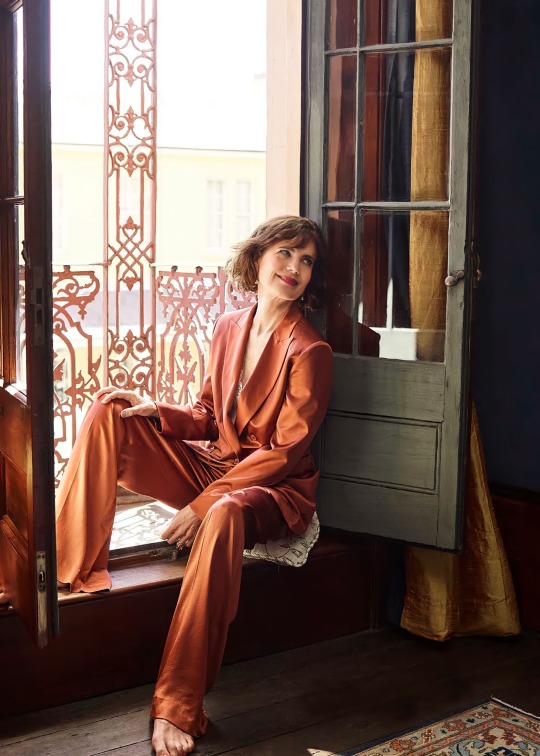


elizabeth mcgovern for “the australian women’s weekly” (may 2019) | 📸: corrie bond
13 notes
·
View notes
Text

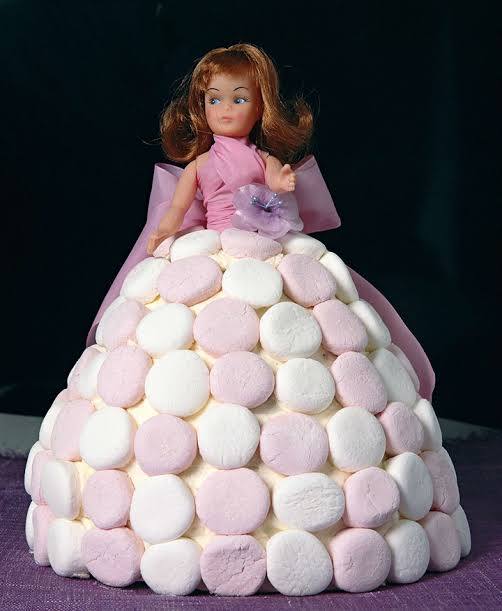
I knew the dress looked familiar.
1 note
·
View note
Text

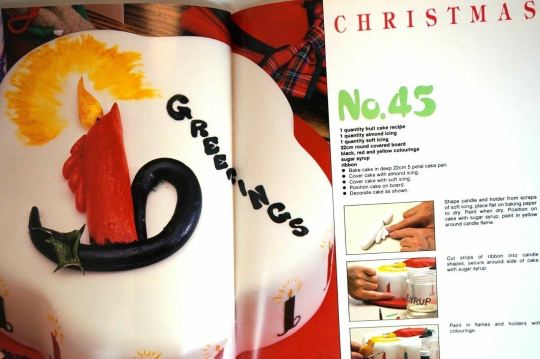
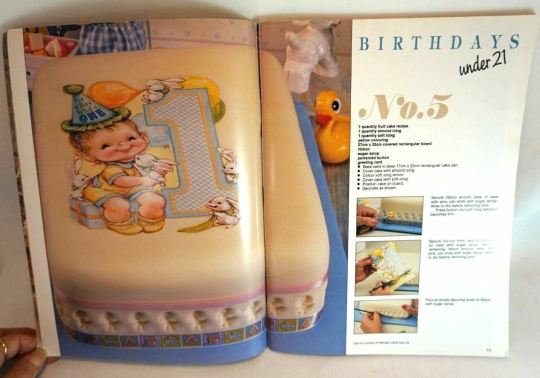
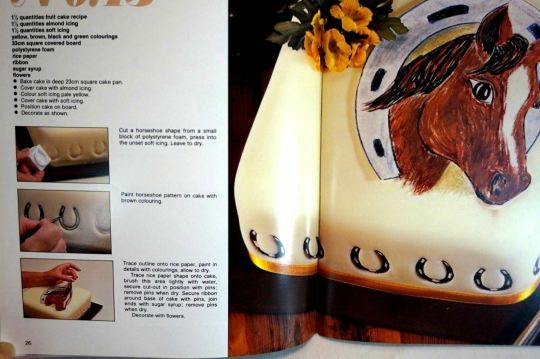
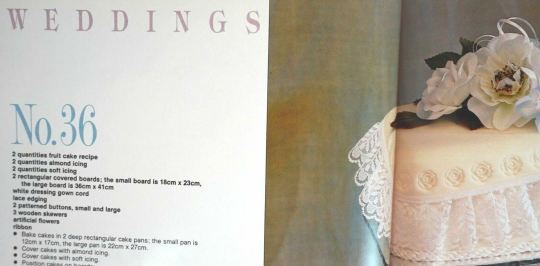
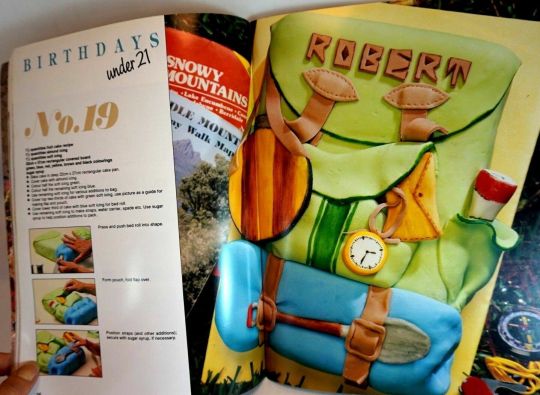
Cake Decorating Made Easy Australian Womens Weekly Home Library 1990 || autradingpost
#cakes#books#cooking books#cake decorating books#cake decorating#birthday cakes#wedding cakes#baby cakes#toddler cakes#australian womens weekly#magazines#paperback
1 note
·
View note